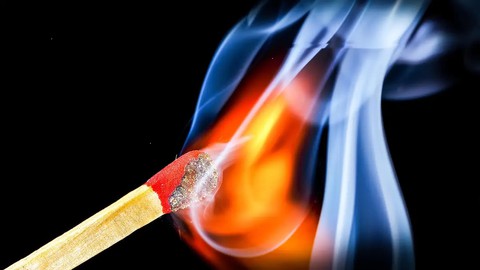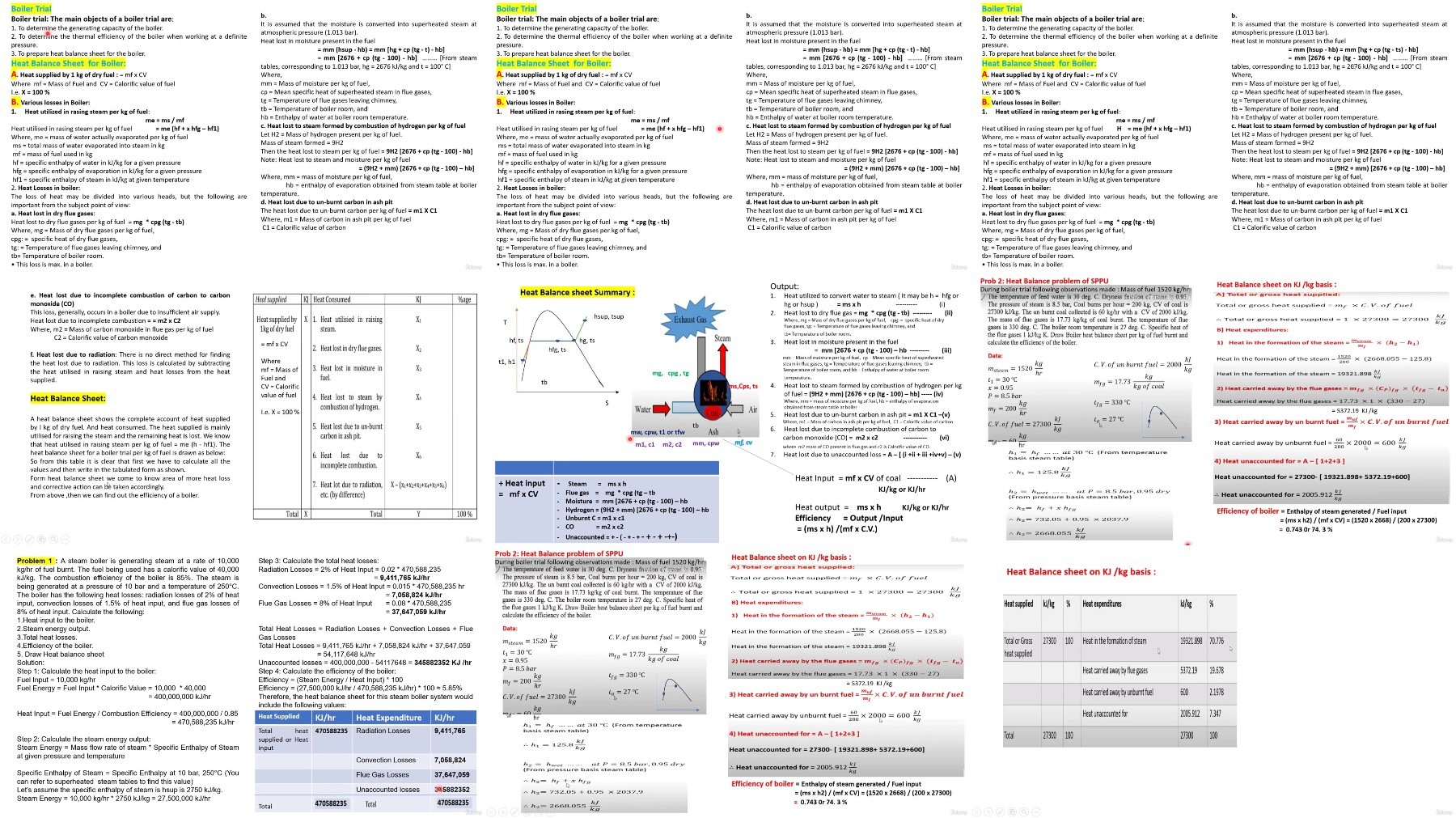Thermodynamics 2024

Thermodynamics
Published 3/2024
MP4 | Video: h264, 1280x720 | Audio: AAC, 44.1 KHz
Language: English
| Size: 21.17 GB[/center]
| Duration: 27h 30m
Engineering Thermodynamics
What you'll learn
Identify and use units and notations in Thermodynamics.
State and illustrate first and second laws of Thermodynamics.
Apply the first and second laws of Thermodynamics to various gas processes and cycles.
To get conversant with properties of steam, dryness fraction measurement, vapor processes and Thermodynamic vapor cycles, performance estimation.
To know about Psychrometric Charts, Psychrometric processes, human comfort conditions.
Requirements
Engineering Physics
Basic concepts of Mechanical Engineering
Systems in Mechanical Engineering
Description
•So dear students I am B.S. Racheti continuing to drop new courses based on Thermodynamics which is useful to SE (Mech) students and also useful as a reference to all mechanical students.•As I am having experience of Industry and teaching, it is my pleasure to blend my knowledge and put up in front of you in easier language and easier ways with examples.•For higher undergraduate studies learners have to refer many books and references and also they have other subjects, term works, classes etc. So it gets very difficult to study each subject considering time constraint in the semester pattern exams.•For this I had collected data from various Text books, reference books web sites etc so as to optimize the contents as per syllabus mentioned below. For any lecturer / Professor this is the general practice to collect information and to deliver the lectures so as the learners get benefited and can score maximum.Course Objectives: Identify and use units and notations in Thermodynamics.State and illustrate first and second laws of Thermodynamics.Explain the concepts of entropy, enthalpy, reversibility and irreversibility.Apply the first and second laws of Thermodynamics to various gas processes and cycles.To get conversant with properties of steam, dryness fraction measurement, vapor processes and Thermodynamic vapor cycles, performance estimation.To get conversant with Psychrometric Charts, Psychrometric processes, human comfort conditions.Course contents:Unit I Laws of thermodynamics•Introduction of thermodynamics, Review of basic definitions, Zeroth law of thermodynamics, Macro and Microscopic Approach, State Postulate, State, Process and Thermodynamic Cycles, First law of thermodynamics, Joules experiment, Applications of first law to flow and non flow processes and cycles. Steady flow energy equation and its application to different devices. Equivalence of Clausius and Kelvin Planck Statement, PMM I and II, Concept of Reversibility and Irreversibility.Unit II Entropy•Entropy as a property, Clausius inequality, Principle of increase of Entropy, Change of entropy for an ideal gas and pure substance.•Ideal Gas•Ideal Gas definition Gas Laws: Boyle's law, Charle's law, Avagadro's Law, Equation of State, Ideal Gas constant and Universal Gas constant, Ideal gas processes- on P-V and T-S diagrams Constant Pressure, Constant Volume, Isothermal, Adiabatic, Polytropic, Throttling Processes, Calculations of heat transfer, work done, internal energy. Change in entropy, enthalpy.Unit III Thermodynamic cycles•Gas Power Cycles: Air Standard Cycle, Efficiency and Mean Effective Pressure, Carnot Cycle, Otto Cycle, Diesel cycle, Dual cycle, Comparison of cycles, Brayton cycle, Gas Refrigeration Cycle: Reversed Carnot, Bell Coleman Cycle.•Availability: Available and unavailable energy, concept of availability, availability of heat source at constant temperature and variable temperature, Availability of non flow and steady flow systems, Helmholtz and Gibbs function, irreversibility and second law efficiency.Unit IV Properties of Pure substances•Formation of steam, Phase changes, Properties of steam, Use of Steam Tables, Study of P-v,•T-s and Mollier diagram for steam, Dryness fraction and its determination, Study of steam calorimeters (Barrel, Separating, Throttling and combined)•Non-flow and Steady flow vapour processes, Change of properties, Work and heat transfer.•Thermodynamic Vapour Cycle Vapour Power Cycles: Carnot cycle, Rankine cycle, Comparison of Carnot cycle and Rankine cycle, Efficiency of Rankine cycle, Relative efficiency, Effect of superheat, boiler and condenser pressure on performance of Rankine cycle, Vapour Refrigeration Cycles: Reversed Carnot Vapor Cycle, Vapor Compression Cycle and representation of cycle on P-h and T-s diagram, Refrigerating effect, Compressor power and COP estimation (Numerical treatment using R134a only and enthalpy Cp, Cv data should be provided in tabulated form).Unit V Steam Generators•Introduction to fuels, Theoretical amount of Oxygen / Air required for combustion. Stoichiometric Air: Fuel ratio, Excess air, lean and rich mixtures, Stoichiometric A: F ratio for petrol (No Numerical Treatment on fuels and combustion, only basic definitions and terminologies to be covered).•Classification, Constructional details of low pressure boilers, Features of high pressure (power) boilers, Introduction to IBR, Boiler performance calculations-Equivalent evaporation, Boiler efficiency Energy balance, Boiler draught (natural draught numerical only).Unit VI Psychrometry•Psychrometry and Psychrometric Properties, Basic Terminologies, Psychrometric Relations, Psychrometric Chart, Psychrometric Processes, Thermodynamics of Human Body, Comfort Conditions (Numerical treatment using Psychrometric chart only).Course Outcomes:On completion of the course, learner will be able to–Apply various laws of thermodynamics to various processes and real systems.Apply the concept of Entropy, Calculate heat, work and other important thermodynamic properties for various ideal gas processes.Estimate performance of various Thermodynamic gas power cycles and gas refrigeration cycle and availability in each case.Estimate the condition of steam and performance of vapour power cycle and vapour compression cycle.Estimate Stoichiometric air required for combustion, performance of steam generators and natural draught requirements in boiler plants.
Overview
Section 1: Introduction- Basics
Lecture 1 Introduction Demo Lecture
Lecture 2 Introduction to Thermodynamics-I
Lecture 3 Introduction-II
Lecture 4 Introduction-III
Lecture 5 Introduction-IV- Pressure
Lecture 6 Introduction-V-Temperature
Section 2: First Law of Thermodynamics
Lecture 7 First Law of thermodynamics-Demo
Lecture 8 Heat and Work
Lecture 9 First Law of Thermodynamics
Lecture 10 Numericals on First Law
Lecture 11 First Law for Steady Flow Energy Process
Lecture 12 Numericals on SFEE-I
Lecture 13 Numericals on SFEE-II
Section 3: Second law of Thermodynamics
Lecture 14 Demo on Second law of Thermodynamics
Lecture 15 Second Law ofThermodynamics
Lecture 16 Carnot Cycle-Heat Engines, Heat Pumps
Lecture 17 COP of Heat pump and Refrigerator
Lecture 18 Numericals on COP-II
Lecture 19 Numericals on COP-III
Section 4: Entropy
Lecture 20 Entropy-Introduction
Lecture 21 Entropy-II
Lecture 22 Entropy for Various Processes
Lecture 23 Numericals on Entropy-I
Lecture 24 Numericals on Entropy-II A
Lecture 25 Numericals on Entropy-II B
Section 5: Ideal Gases
Lecture 26 Introduction to ideal gases
Lecture 27 Ideal Gases Processes
Lecture 28 Ideal Gases Numericals-I
Lecture 29 Ideal Gases Numericals-II
Lecture 30 Ideal Gases Numericals-III
Section 6: Thermodynamic Cycles
Lecture 31 Carnot cycle and Rankine Cycle
Lecture 32 Otto Cycle
Lecture 33 Diesel Cycle
Lecture 34 Dual Cycle
Lecture 35 Brayton Cycle-A
Lecture 36 Brayton closed Cycle-B
Section 7: Availability
Lecture 37 Availability
Section 8: Properties of Pure Substance
Lecture 38 Introduction to pure substance, formation of steam and processes
Lecture 39 Pure substance - Non flow processes
Lecture 40 Pure substance - Steady flow processes
Lecture 41 Pure substance - Numericals -I
Lecture 42 Pure substance - Numericals -II
Lecture 43 Dryness fraction methods - I
Lecture 44 Dryness fraction methods - II ( Resource file attached in above lecture no. 43)
Section 9: Thermodynamic Vapor cycles
Lecture 45 Carnot and Rankine Cycle
Lecture 46 Comparison of Cycles
Lecture 47 Reversed Carnot Cycle
Lecture 48 Refrigeration Cycle
Lecture 49 Numericals on Refrigeration Cycle
Section 10: Steam Generators
Lecture 50 Introduction to fuels -I
Lecture 51 Introduction to fuels-II ( Resource file for I & II part is attached here)
Lecture 52 Stochiometric Ratio
Lecture 53 Steam Boilers -I
Lecture 54 Steam Boilers -II
Lecture 55 Steam Boilers Performance
Lecture 56 Heat Balance Sheet
Lecture 57 Boiler Draught
Section 11: Psychrometry
Lecture 58 Introduction to Psychrometry
Lecture 59 Psychrometry Chart
Lecture 60 Psychrometric Processes
Lecture 61 Numericals based on Psychrometry Chart
Lecture 62 Numericals on chart and processes
S.E. (Mechanical Engineering),Engineering and Diploma Students (Mechanical wing)

https://rapidgator.net/file/aebcae48d15e57a12785b028c66f17c0/Thermodynamics_2024.z01
https://rapidgator.net/file/ba1a17ab0d4f5d9285d476a072086db0/Thermodynamics_2024.z02
https://rapidgator.net/file/f38f464bcfdabf3eb3e9936e1185e615/Thermodynamics_2024.z03
https://rapidgator.net/file/c1185bbd00006d8c8efb96eac3376317/Thermodynamics_2024.z04
https://rapidgator.net/file/2de4e57dfeb7f21ee0153e0cacb4dfd6/Thermodynamics_2024.z05
https://rapidgator.net/file/f632bc05229051148c6bbabfe8b801a0/Thermodynamics_2024.z06
https://rapidgator.net/file/ce5b60610f2de15d99641d84bb952f0f/Thermodynamics_2024.z07
https://rapidgator.net/file/df0d48ebcf469fbfd438d1f200ab96a4/Thermodynamics_2024.zip
https://ddownload.com/pdmmowovfb5i/Thermodynamics_2024.z01
https://ddownload.com/1gsf41wcznyw/Thermodynamics_2024.z02
https://ddownload.com/1vnn0kp5y5kh/Thermodynamics_2024.z03
https://ddownload.com/2fcnxplkfofl/Thermodynamics_2024.z04
https://ddownload.com/noc1fk2bwned/Thermodynamics_2024.z05
https://ddownload.com/jt48cyuz3t1o/Thermodynamics_2024.z06
https://ddownload.com/pysb87yqd9ei/Thermodynamics_2024.z07
https://ddownload.com/nfgd6tmxumsc/Thermodynamics_2024.zip
https://fikper.com/3wQe7tSQMu/Thermodynamics_2024.z01.html
https://fikper.com/MCcZlGYGef/Thermodynamics_2024.z02.html
https://fikper.com/NKCETjR0cg/Thermodynamics_2024.z03.html
https://fikper.com/6FWZFbYxGI/Thermodynamics_2024.z04.html
https://fikper.com/SZMT3fKYRz/Thermodynamics_2024.z05.html
https://fikper.com/x1AKIIdk5M/Thermodynamics_2024.z06.html
https://fikper.com/JERYJ2IoMj/Thermodynamics_2024.z07.html
https://fikper.com/NbPr1h90c3/Thermodynamics_2024.zip.html


Free search engine download: Thermodynamics (2024)
-
Movie Section
-
Software

